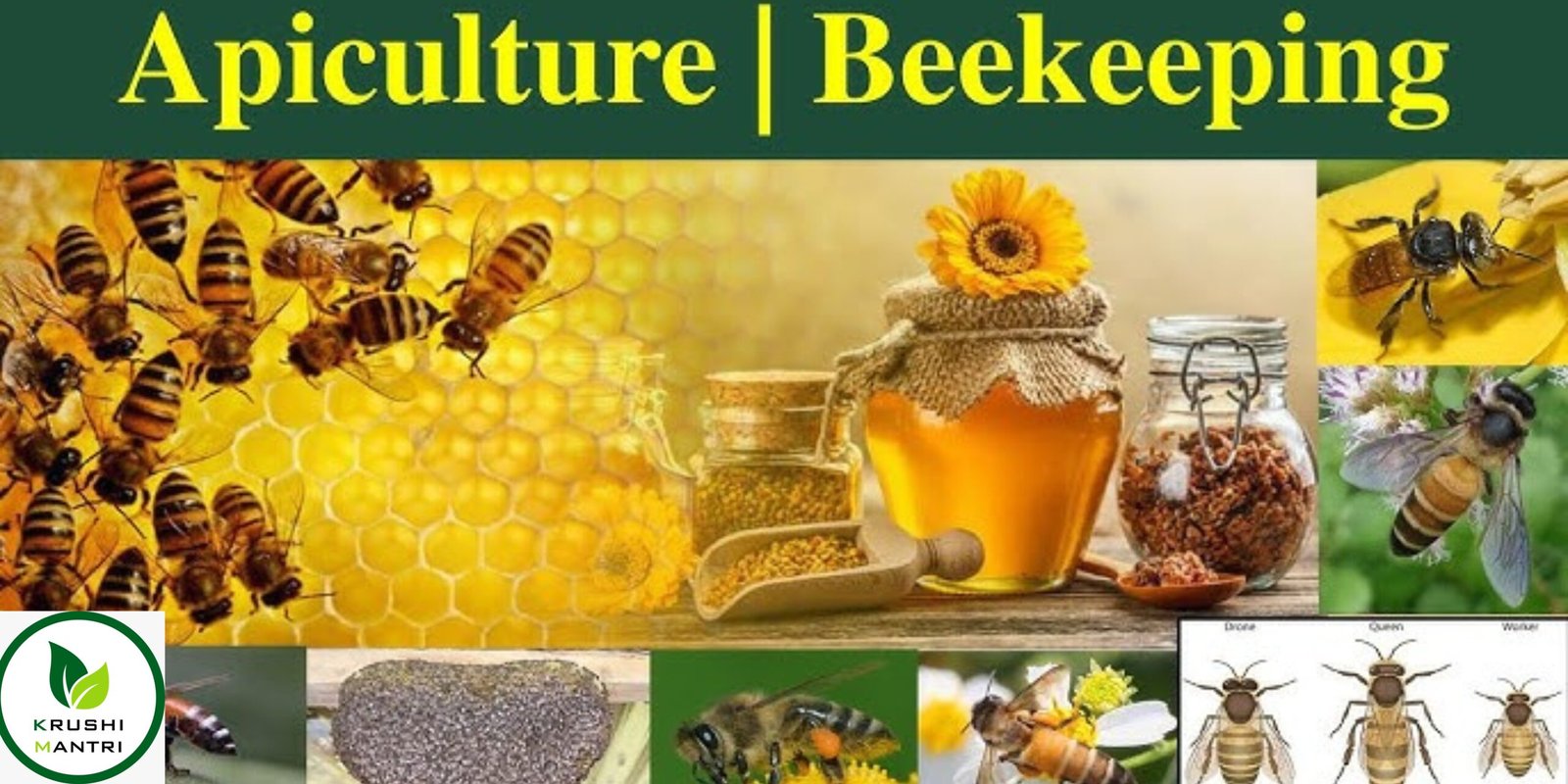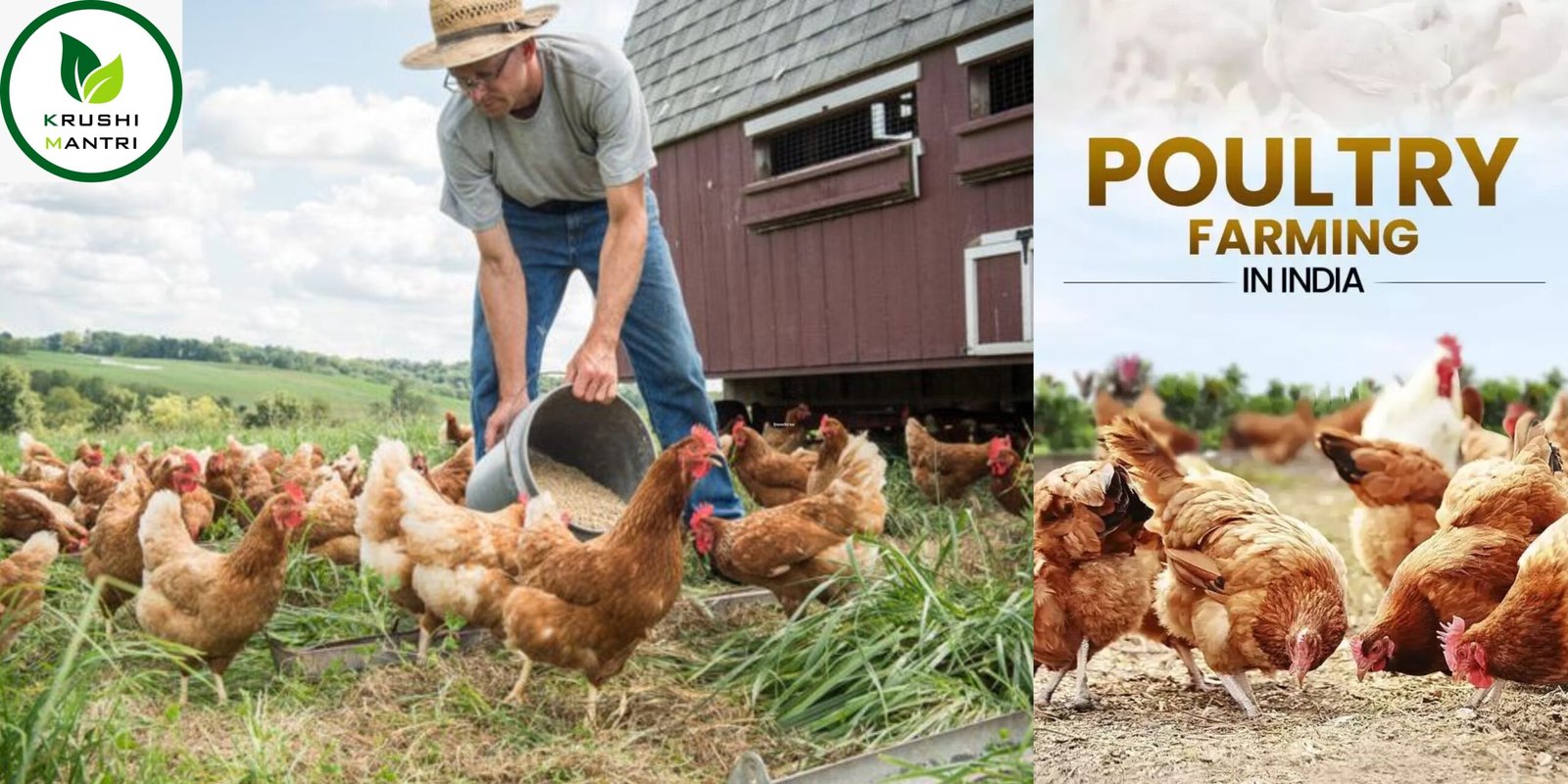Exploring Gir Cow Cost & Benefit’s
Introduction to Gir Cow:-
Welcome to my blog, where I share my experience and knowledge about farming and agriculture. Today, we’ll be discussing the Gir cow, also known as the Gyr or Girinka. This breed of cattle originates from the Gir forest region of India and is renowned for its hardiness and ability to thrive in hot, tropical climates.
Gir cows are highly valued for their milk production, which is considered one of the best in India. Their milk is known for its high fat and protein content, making it ideal for producing ghee, a clarified butter commonly used in Indian cuisine. Not only are they used for milk, but also for their meat and as draft animals due to their docile temperament.
These cows have now spread to different parts of the world, including South America, Africa, and Australia, where they are crossbred with other breeds to improve milk production and meat quality. However, there is a growing interest in preserving the purebred Gir cow in India, where it is considered a cultural icon and an essential part of the country’s heritage.
In this blog post, we’ll explore the Gir cow’s characteristics and its significance in Indian agriculture. Join me as we delve deeper into the world of farming and discover the importance of preserving indigenous breeds like the Gir cow.
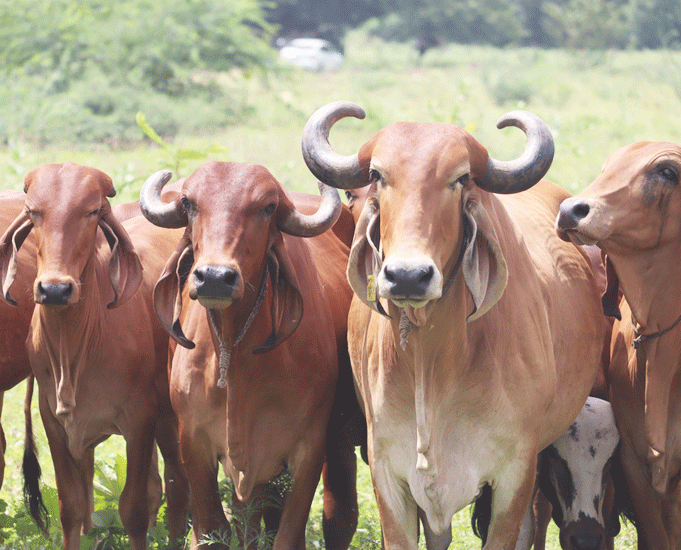
Geographical parameters of Gir:-
- The Gir breed is typically found in a breeding tract between 20.5˚ to 22.6˚ latitude and 70.0˚ to 72.0˚ longitude in the Gir forest region of western Gujarat, India
- The region has an average elevation of 400 meters above sea level and is characterized by medium black soil
- The temperature in the region varies from 7 ˚C to 45 ˚C, and the humidity ranges between 20% to 80%
- The annual rainfall in the region varies from 500-1500 mm, with the maximum precipitation occurring during July-August
- The primary crops cultivated in the region include Bajra, jowar, wheat, grams, pigeon peas, groundnut, castor, cotton, onion, sugar-cane, and garlic
- The area is also home to important tree species such as banyan, rain-tree, neem, and acacia
- The Gir cow, named after the region, is believed to have originated in the Gir forest region and is well-suited to the region’s climate and vegetation
- Gir cows can now be found throughout India and in other parts of the world, but purebred Gir cows are mainly found in Gujarat.
Physical Characteristics:-
Here’s a table summarizing the physical characteristics of the Gir cow:
| Characteristic | Description |
|---|---|
| Body size and weight | Medium to large sized breed, 400-600 kg |
| Body color | Light to medium brown, with white markings |
| Head shape and features | Broad forehead, slightly dished face, large and bright eyes |
| Horns | Long, slender, curved and point slightly upwards |
| Udder and teats | Well-developed udder, four evenly spaced large cylindrical teats |
| Hump | Well-developed hump made of muscle tissue on the shoulders |
Typical breed characteristics of Gir Cattle:-
- Adaptability: Gir cattle are known for their adaptability to different climates and environments. They are able to thrive in hot and humid conditions, as well as in semi-arid and arid regions.
- Docility: The Gir breed is known for their docile temperament, which makes them easy to handle and manage.
- Milk production: Gir cows are good milk producers, with an average lactation period of 300 days and an average milk yield of 1590 kg per lactation.
- Heat tolerance: The Gir breed is known for their excellent heat tolerance, which makes them suitable for hot and humid climates.
- Disease resistance: Gir cattle are relatively resistant to many diseases, such as tick fever and foot-and-mouth disease.
- Strength and endurance: The Gir breed is known for their strength and endurance, which makes them suitable for draught purposes.
- Longevity: Gir cattle have a long lifespan, with some cows living up to 15-20 years.
- Genetic purity: Purebred Gir cattle are valued for their genetic purity, which is maintained through selective breeding programs.
- Color: Gir cattle typically have a light to medium brown coat color, ranging from light fawn to dark brown. The coat is glossy and sometimes has white markings on the face and legs.
- Horns: Gir cattle have long and slender horns that are curved and point slightly upwards. The horns are an important feature of the breed and are used for defense against predators and as a symbol of social status.
- Ears: The ears of Gir cattle are medium in size and droop slightly downward. They are well-covered with hair and are often darker in color than the rest of the body.
- Head, face, eyes, nostrils: The head of a Gir cow is medium to large in size, with a broad forehead and a slightly dished face. The eyes are large and bright, with an intelligent and alert expression. The nostrils are large and well-opened, indicating good respiratory function.
- Brisket: The brisket of a Gir cow is deep and broad, indicating good muscular development.
- Skin: The skin of Gir cattle is loose and pliable, allowing them to tolerate hot and humid climates. The skin color ranges from gray to black.
- Tail: The tail of a Gir cow is long and slender, with a tuft of hair at the end. It is used to swat away flies and other insects.
- Hump: Gir cattle have a well-developed hump on their shoulders, which is made of muscle tissue and helps them to survive in arid and semi-arid environments. The hump stores fat, which is used for energy during times of food scarcity.
Overall, the Gir breed is known for their hardiness, adaptability, and productivity, making them a popular choice for dairy and draught purposes in many parts of the world.
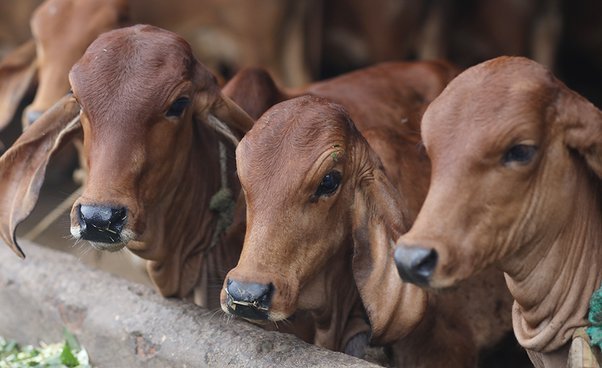
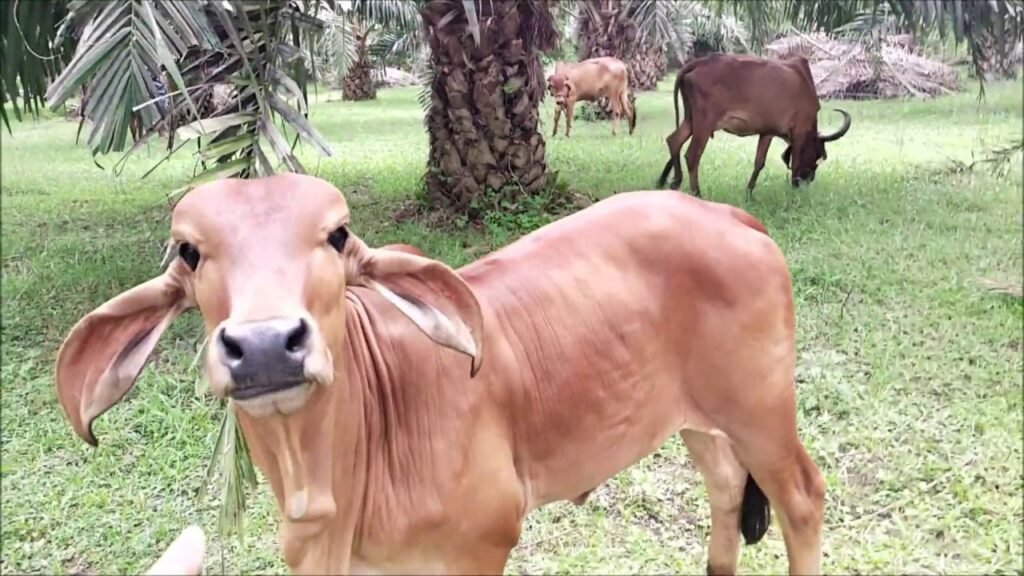
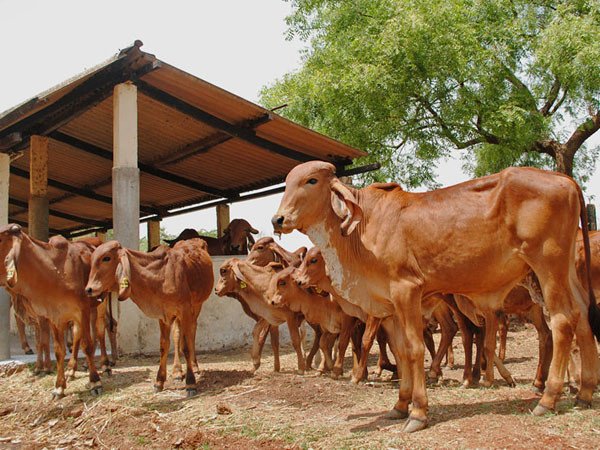
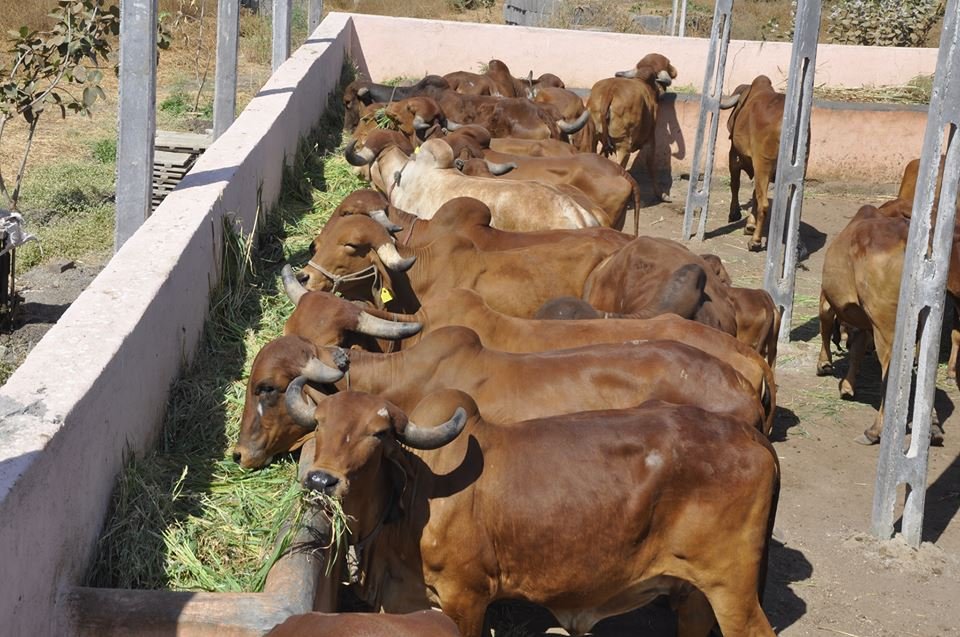
Gir Cow Cost:-
The cost of a Gir cow can vary depending on various factors such as age, breed purity, location, demand, and supply. Here are some estimated costs associated with Gir cows:
- A purebred Gir cow can cost anywhere from Rs. 50,000 to Rs. 2,00,000 or more, depending on its age, breeding, and pedigree.
- A Gir cow calf can cost around Rs. 20,000 to Rs. 50,000, depending on its age and gender.
- The cost of a pregnant Gir cow can range from Rs. 70,000 to Rs. 2,50,000 or more, depending on its age and pregnancy stage.
- The cost of a Gir bull can vary from Rs. 70,000 to Rs. 1,50,000 or more, depending on its age, breed purity, and pedigree.
- The transportation cost of a Gir cow can also vary based on the distance to be covered and the mode of transportation.
It is important to note that these prices are estimates and can vary significantly based on various factors.
Girl Cow Milk Per Day:-
Gir cows are renowned for their ability to produce high-quality milk, with the average yield ranging between 8 to 12 liters per day. However, certain high-yielding cows have been known to produce up to 20 liters of milk daily. It’s crucial to understand that various factors can influence milk production in Gir cows, including genetics, age, nutrition, and lactation stage.
Moreover, it’s essential to emphasize that the milk yield can be significantly impacted by factors like breed purity, environmental conditions, and management practices. Ensuring proper care, management, and nutrition of Gir cows can help optimize milk yield. Regular veterinary care and attention to the cow’s well-being can also ensure the longevity of high milk production.
In conclusion, while Gir cows are known for their high milk yield and quality, it’s essential to consider various factors that can influence production. By providing optimal care and management, farmers can enhance the milk yield of their Gir cows, ensuring a profitable and sustainable dairy business.
Conservation and Genetic Improvement Programmes of Gir:
Conservation and genetic improvement programs have been implemented to preserve and improve the Gir breed of cattle. Some of these initiatives are:
- Gir National Genetic Resource Repository (GNGRR): This program was launched in 2015 to conserve and improve the genetic diversity of the Gir breed. It is a joint effort between the National Bureau of Animal Genetic Resources (NBAGR) and the Gujarat Livestock Development Board (GLDB). The program involves collecting and preserving genetic material from purebred Gir cattle, including semen, embryos, and DNA.
- Gir Breed Improvement Program: This program aims to improve the productivity and quality of the Gir breed through selective breeding and genetic improvement. The program includes identification and selection of high-quality Gir bulls and cows for breeding, use of modern breeding techniques such as artificial insemination, and implementation of effective management practices.
- Gir Cow Development Program: This program focuses on improving the health and productivity of Gir cows through proper nutrition, healthcare, and management practices. It includes initiatives such as provision of high-quality feed, regular health check-ups, and training of farmers in proper management practices.
- Gir Milk Production Enhancement Program: This program aims to increase the milk production of Gir cows through proper nutrition, genetic improvement, and management practices. It includes initiatives such as provision of high-quality feed, promotion of artificial insemination, and training of farmers in proper management practices.
Overall, these programs aim to conserve and improve the Gir breed of cattle, which is an important genetic resource for India and the world.
Gir Cattle breed profile:-
The Gir cattle breed is an indigenous breed of cattle found in the Gir forest region of the western Indian state of Gujarat. It is also known as the Bhadawari, Desan, or Gujarati breed. The breed is known for its high-quality milk, drought resistance, and adaptability to harsh environments.
Here are some key characteristics of the Gir cattle breed:
- Color: The Gir cow is usually reddish-brown, with a light-colored stripe along the back. Bulls are typically darker than cows.
- Horns: Both cows and bulls have long, upward-curved horns.
- Ears: The ears are medium to long in length and droop slightly.
- Head: The head is long and narrow, with a slightly convex profile.
- Face: The face is broad and flat, with a straight or slightly concave profile.
- Eyes: The eyes are large and expressive, with a gentle expression.
- Nostrils: The nostrils are large and open.
- Brisket: The brisket is deep and broad.
- Skin: The skin is loose and pliable, with a fine texture.
- Tail: The tail is long and tapering, reaching to the hocks.
- Hump: The breed is known for its distinctive hump, which is prominent in bulls and less prominent in cows.
Gir cattle are valued for their ability to produce high-quality milk, which is rich in fat and protein. They are also known for their adaptability to harsh environments and resistance to diseases. The breed is considered an important genetic resource in India and is the subject of conservation and genetic improvement programs.
The advantages of having a Gir cow dairy far:-
There are several advantages to having a Gir cow dairy farm, including:
- High Milk Yield: Gir cows are known for their high milk yield, producing up to 12 liters of milk per day on average. This can make a Gir cow dairy farm a profitable business venture.
- High Milk Quality: The milk produced by Gir cows is of high quality, with a higher fat content than other breeds of cows. This makes it ideal for making products such as ghee, butter, and cheese.
- Adaptability: Gir cows are well adapted to harsh environments and can tolerate extreme temperatures, making them suitable for dairy farming in various regions.
- Disease Resistance: Gir cows are known for their resistance to various diseases, reducing the need for frequent veterinary interventions and saving on medical costs.
- Draught Animal: The bulls of Gir cattle can be used as draught animals for plowing and transportation, providing additional benefits to farmers.
- Genetic Resource: Gir cattle are a valuable genetic resource, and conservation and genetic improvement programs are in place to ensure their survival and sustainability.
Overall, the advantages of having a Gir cow dairy farm include high milk yield and quality, adaptability, disease resistance, and the potential for using bulls as draught animals
We hope this blog is vital for you; hence more information regarding any agriculture sector, stay tuned with Krushimantri.com
And more information regarding any travel, stay turned with urbanchats.com
Question and Answer
1. What is a Gir Cow?
Answer: A Gir Cow is a breed of cow that originated in India, known for their distinctive hump and milk production.
2. How much milk does a Gir Cow produce per day?
Answer: On average, a Gir Cow can produce between 8-12 liters of milk per day.
3. What is the price of a Gir Cow?
Answer: The price of a Gir Cow can vary depending on a number of factors, including age, breed purity, and location. Generally, Gir Cows can cost anywhere from Rs. 50,000 to Rs. 2,00,000 or more
4. What are the benefits of Gir Cow milk?
Answer: Gir Cow milk is high in protein, calcium, and other essential nutrients. It is also believed to have anti-inflammatory and anti-cancer properties.
5. How do I take care of my Gir Cow?
Answer: Proper care for Gir Cows includes providing adequate food, water, shelter, and regular veterinary check-ups. It is also important to maintain a clean and hygienic living environment.
6. How long do Gir Cows live?
Answer: Gir Cows can live for up to 20 years with proper care and nutrition.
7. What is the difference between Gir Cow milk and other types of milk?
Answer: Gir Cow milk is known for its high fat and protein content, as well as its unique flavor. It is also believed to be easier to digest than other types of milk.
8. How do I breed Gir Cows?
Answer: Proper breeding of Gir Cows involves selecting healthy, purebred animals and following recommended breeding practices. It is also important to have a thorough understanding of the breeding process and genetics.
9. What are some common health issues in Gir Cows?
Answer: Common health issues in Gir Cows include mastitis, foot and mouth disease, and tick infestations. Regular veterinary care and preventative measures can help prevent these issues.
10. What is the history of Gir Cows?
Answer: Gir Cows have a long history in India, dating back over 4000 years. They are believed to have been selectively bred for their milk and hardiness, and were once used extensively in agriculture and transportation. Today, they are primarily used for milk production and breeding.








